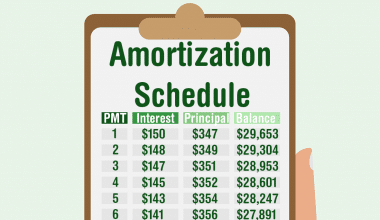Copyright laws protect original works of art that can be seen or heard, like music, art, photographs, films, dance, and other forms of expression. Read on to learn how to copyright a business name and logo.
How Do You Copyright a Name?
Copyright protection is a legal requirement for all original business-produced audio, video, books, reports, and other materials, including logo designs. It’s important to remember that copyright applies to all original works as soon as they are made. But registering it is what protects it from attempts by others to use it for their own purposes because you then have proof to support your claim to it. If someone tries to copy your original works, like your logo, and passes them off as their own, you can sue them for using your property, but only if you have registered your copyright. However, a name can’t be copyrighted but can be trademarked. You can trademark a name in a number of ways. They include:
#1. Usage Under Common Law
Begin using the name in business immediately. Once you use your common law rights, they are set in stone. As soon as a company uses a name in connection with its goods or services, common law trademark rights become available. Under common law, a trademark’s rights depend on how long it has been used and where it was registered. So, if you were the first person to use the name “Wickit Candles” in connection with those services and you opened a candle shop there, you will have common law rights to the area where people know your brand.
#2. State Trademark Registration
This requires that you apply through the Secretary of State’s office in your state. You will now be bound by the law, and you can sue for statutory damages if that’s what your state law says you can do.
#3. The Greatest Federal Trademark Registration
The US federal trademark registration protects your brand all over the country. This protects you not only from US companies, but also from companies outside the US that want to sell their goods or services in the US.
Can a Name Be Protected by Copyright?
What happens if I file a copyright request for a name with the United States Copyright Office? You can put in an application for a piece of art that contains a certain phrase, but that won’t stop other people from using that phrase. Although the words used in the design will not be protected, your artistic effort will. The written works themselves are protected by copyright for text works. This would not, however, apply to words or phrases that are used to identify a company.
- No. A name is not subject to copyright.
- Copyright does not protect names and phrases in written works of art like books.
How to Copyright a Name for a Business
You have probably seen the term “copyright” when looking for strategies to safeguard your company’s identity. If you want to be sure that nobody takes advantage of your hard work and unfairly uses your business name, protecting your business name is vital. Copyright doesn’t protect ideas, so ideas can only be protected by copyright when they have become something concrete.
Unfortunately, it is impossible to copyright company names. Protecting designs and other aspects of your business, like your logo, with a copyright can be very beneficial. However, it cannot safeguard your company name.
Can I Protect the Name of My Company Using Copyright?
Copyright is excellent for safeguarding components of your company, including designs, technical drawings, and even logo, as we’ve already mentioned. Copyright is a great way for creators to make sure that their work isn’t used to make money.
- The copyright can’t protect your company name, though. Also, copyright doesn’t protect words or names on their own. These items are thought not unique nor substantial enough to justify copyright protection due to their ease of duplication. So how can you secure your company name if you can’t do so using copyright? Read on to learn about trademarking and how to protect your company name!
- Choose a trademark that is appropriate for you or explore other options first. If you want to safeguard the name of your brand, you must register a trademark. If you wish to keep a project or concept private, consider a patent or copyright.
- The next step is to choose the mark that will go to the USPTO. Ensure the USPTO will recognize your trademark, then find out how to distinguish it enough to gain protection.
- Once you’ve identified a viable trademark name, make an application and send it to the USPTO. Create an account, complete the application forms, and use the USPTO system to check the status of your application.
- Two months after the USPTO sends a registration, you must submit maintenance paperwork to keep your mark in good standing. If you don’t submit these forms on time, your trademark may expire. It’s also crucial to use the USPTO system each year to monitor the status of your trademark.
How to Copyright a Name and Logo
Every company needs a unique logo that is recognizable, memorable, and different. Your logo can help you stand out from the competition and draw in your target market, just like an effective brand name or a strong line of products. However, even though creating a great logo can be challenging, it’s relatively simple for other businesses to copy your ideas.
There is a widespread, albeit false, belief in today’s digital environment that any content found online is accessible to the whole public. Many businesses believe they can just search Google for logo inspiration when they are trying to come up with their own ideas. This frequently results in numerous small firms using logos that are strikingly similar to those of already existing logos. Even though a logo and the name of the business have copyright protection from the moment they are sketched or produced. However, this protection might not be as comprehensive as you might believe.
As the owner of a logo or a business name, you have a lot more benefits from the optional registration of your copyright, including the power to sue other businesses in federal courts across the US. However, before you start, you need to make sure that your logo or business name can be protected by copyright. Other tips include:
#1. Understand What Types of Property Can Be Protected by Copyright
Before anything else, it is essential to understand which forms of property can be protected by copyright. For instance, in the United States, artwork and logos can be registered under copyright. Therefore, copyright protection does not extend to “existing symbols, designs, or typographic alterations.”
Copyright alone can’t stop people from using your logo because common symbols and designs can’t be undergo the process of copyrighting. You may need to register your copyright together with other forms of protection, such as a trademark, if your design isn’t entirely original.
#2. Ensure That Your Logo Is Distinctive and Imaginative
Copyright can’t be used to protect things like colors, names, or works that have already been published by other people. For example, it would be hard to get copyright protection for a logo that is just a circle with your name in it. When copyrighting a logo, you need to make sure that your design is creative enough to be seen as “artwork.”
#3. Any Name That Has Already Been Owned Should Not Be Used
When searching for the ideal logo, you may discover that many businesses in your industry or specialty utilize similar designs or styles to draw in customers. You can’t use a logo that looks too much like another product on the market just because there are other similar images out there.
So, if you’re dealing with a qualified logo designer, they’ll take the necessary precautions to ensure that you’re not attempting to copyright a design that is too similar to anything already in use in your industry.
How to Protect a Logo From Copying
- Online services provided by the USPTO and the Copyright Office enable people and businesses to copyright photographs and other properties on their own.
- In some circumstances, you could decide that it would be preferable to seek the assistance of an intellectual property lawyer. An attorney can conduct a more in-depth investigation through the databases for trademarks and logo designs.
- This enables you to make sure that you aren’t trying to copyright something that is already the property of another company.
- Additionally, intellectual property lawyers are aware of how to streamline the process of requesting a trademark or copyright for a logo.
- If you need to file a claim against someone who is using your copyright or trademark without your permission, an attorney with experience in IP law or your industry can assist you.
- Copyrighting a logo isn’t as difficult as it might appear, whether you choose to do it yourself or hire legal counsel. All you have to do is notify the Office for United States Copyrighting that you are the owner of the copyright.
- You can either accomplish this by mailing a paper in or by submitting an online application.
Why Copyrighting a Logo Is Beneficial for Protecting Your Brand
Logo copyright is a type of security that gives you the right to your property rights, just like a trademark or a patent. Copyrights and trademarks can protect any creative work or real idea as long as it is unique.
- When you copyright or trademark your intellectual assets, such as a logo or name, you are requesting assistance from the government to ensure that no other company can profit from the use of your property.
- Copyrighting a logo might also help to safeguard the reputation of your company.
How to Copyright a Name for Music
Every track in music has two copyrights, which makes it special. One of them is a copyright in the song, which is made up of the lyrics and the music in the background (beat, instrumental). Copyright protects the “master recording,” or sound recording, itself. For instance, Bob Dylan was the author and composer of the original version of “All Along The Watchtower.” Later, several musicians, including Jimi Hendrix, performed and “covered” it. In this case, Bob Dylan (or his publishing company) owns the copyright on the lyrics and musical arrangement, whereas Jimi Hendrix owns the sound recording, such as his version of this tune (or his record label).
How Do I Copyright Music?
The U.S. copyright office must register a work before it is “official,” even if it has “global copyright” under the Berne Convention. In America, ownership benefits cannot be used before copyright is registered. Hence, to register a copyright, all you have to do is make an entry and send it to the United States Copyright Office with the necessary filing fee and copies of the content you want to protect. After the work has been registered and the certification has been given, the benefits start right away and go back to the date it was filed.
The owner of the work receives additional, beneficial advantages if the creative materials are formally registered with the U.S. Copyright Office within three months of their distribution to the public. One of these advantages is that the work is now public information and searchable in the Library of Congress and the U.S. Copyright Office. In accordance with 17 U.S.C. 411(a), the work must also be registered prior to the filing of a copyright infringement lawsuit.
Can You Legally Copyright a Name?
No, the law on copyright does not protect names.
How Do I Copyright a Name for Free?
Since you will always have to pay at least a minor charge to cover the costs of processing and analyzing your trademark registration, there is no way to register a trademark for free.
How Do I Get a Copyright Name?
Fill out the copyright registration form on the online registration website. Visit the United States Copyright Office’s official website to submit your copyright application online if your company is based there. You can also send in your application on paper.
How Long Does a Copyright Last?
Copyright protection usually lasts for works made after January 1, 1978, for the author’s lifetime plus an extra 70 years.
Can You Copyright a Name Without a Business?
You can’t register a trademark for something that isn’t for business. Only brand names that you currently use in business or anticipate employing in it soon are eligible for trademark protection. Also, you can’t register a name that is too general or too descriptive.
How Long Does It Take to Copyright a Name?
The procedure typically takes 12 to 18 months. It takes a long time to register a trademark because your application must go through several steps. Understanding each step in the procedure will help you see why obtaining a trademark requires so much time.
References
- uschamber.com
- tunecore.com






